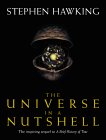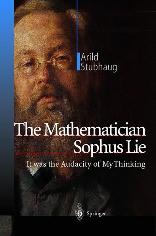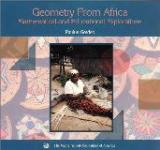book review
Research on the Universe leads to many such startling conclusions and this book attempts to describe some of the surprising phenomena which occupy astronomers and cosmologists.
Our Universe, Martin Rees' laboratory, allows its natural laws to be cleverly interpreted at arm's length, by observing the 'extreme' physics which we could never replicate in a laboratory. The biggest questions have an almost philosophical tenor.
What is the nature of the universe that we live in? This is a question that has exercised philosophers and scientists for as long as people have been able to think. Almost everyone has asked it at one time or another, in one form or another. It is hard to imagine a more fundamental question.
ver the last hundred years, human understanding of the nature of the universe has expanded at a mind-boggling rate; and over the last forty, Kip Thorne, along with Stephen Hawking, who wrote the foreword to this book, have been among the group of people shining most light into the darkness. But, aware that his research is carried out on behalf of us all, Thorne has not neglected the task of explaining its results to the rest of us.
Ever since Watson and Crick worked out the double helix structure of DNA in 1953, the role of genetics in biology has grown and grown. Genetic determinism - the belief that we are controlled by our genes and that no other factor is significant - is now all-pervasive.
Over the last decade, the discipline of neuropsychology has shed light on many aspects of human thought. Brain scans, carefully structured behavioural experiments, and the study of individuals who have suffered brain damage, have taught us much about which abilities are native to humans and which learned; which abilities can be lost and what happens when they are.
"I am certain, absolutely certain that...these theories will be recognized as fundamental at some point in the future."
Sophus Lie said these words more than hundred years ago. We know now that he was right, absolutely right. The notions of "Lie groups" and "Lie algebras" are in the vocabulary of every mathematician and physicist today. Lie's theories are indispensable tools for understanding the physical laws of Nature.
A Beautiful Mind is a touching, emotionally charged film detailing the life of a brilliant academic who suffers from schizophrenia. This affliction slowly takes over his mind and we watch as his life crumbles apart around him.
"As Obi-Wan Kenobi said about the Light Sabre in Star Wars IV, a slide-rule is an ancient weapon from a more civilised age," state Chris Budd and Chris Sangwin in their book, Mathematics Galore, soon to released by Oxford University Press. The book digs up the slide-rule and a few more historical artefacts, as well as the art of country dancing, to present a pick-and-mix bag of mathematical ideas for the aspiring mathematician or the mathematically inclined general reader.
This beautifully illustrated book by the world's leading authority on African mathematics provides us with a wide-ranging introduction to mathematical intuition in sub-Saharan African cultures. These cultures are extremely diverse and expressive in their creation of designs and motifs that embody geometrical and topological ideas. No one is better qualified to tell us about it than Paulus Gerdes, who has lived and worked in Mozambique for many years.
This CD ROM, produced by the Centre for the Popularisation of Mathematics at the University of Wales in Bangor, is a most unusual mixture of mathematical exposition and modern art. A central part of the content is a gallery of sculptures by John Robinson, much of whose work takes inspiration from mathematical objects, such as fractals and knots. This work, described by the artist as symbolic sculpture, uses forms such as the logarithmic spiral, and makes connections with the forces that shape our universe.
"Math Chat" began as a live phone-in TV show in the USA, spawned a newspaper column and a website, and now it has produced a book. The whole project was the brainchild of Williams' College mathematician Frank Morgan and has both stimulated interest in maths across a broad range of the community and led to the formation of highly successful undergraduate research groups in mathematics.
This is the story of Sarah Flannery, who at age 16 won the titles of 1999 Irish Young Scientist of the Year and European Young Scientist of the Year for her innovative work on cryptography. Written by Sarah with her father David, who taught her mathematics from a young age and encouraged her mathematical flights, the book is an engaging mix of mathematical exposition - always clear and rigorous but never dull - and first-person descriptions of the storm that erupted when the world media latched onto her story. Easily written in a friendly style, you could imagine that this is the adventure of someone you know.










